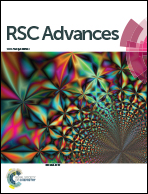The effect of additives on the properties of electrodeposited Ni–zircon composite coatings
Abstract
In the present study, the suitability of zircon powder as a new distributive phase for electrodeposited Ni composite coating is explored. Ni–zircon composite coatings are electrodeposited from a nickel sulfamate bath. Ball-milled zircon mineral powder with an average particle size of 0.13 μm has been used as the new distributive phase. The optimized particle loading and current density are 50 g L−1 and 0.77 A dm−2 respectively. The influence of additives like coumarin and cetyl trimethylammonium bromide (CTAB) on the properties of electrodeposited Ni–zircon coatings is reported. Ni–zircon coatings containing coumarin exhibit the highest microhardness (∼650 HK at 50 gF load) and poor corrosion resistance. The poor corrosion resistance is attributed to the presence of cracks. Experimental results show that CTAB addition is very effective in increasing the amount of zircon particles in the Ni matrix. CTAB acts as an effective surfactant and decreases the agglomeration of particles in the Ni matrix. This results in a more uniform distribution of zircon particles in the nickel matrix. A synergistic combination of higher microhardness and corrosion resistance is imparted to the Ni–zircon composite coating by the addition of CTAB to the nickel sulfamate bath.


 Please wait while we load your content...
Please wait while we load your content...